The construction of the building began in 1935, where there used to be a hospital and this is the year it was destroyed.
Construction stopped during World War II, and then continued until the building’s dedication ceremony in December 1953.
Today the building is used by various departments of the University of Paris.
The building was photographed on the same day
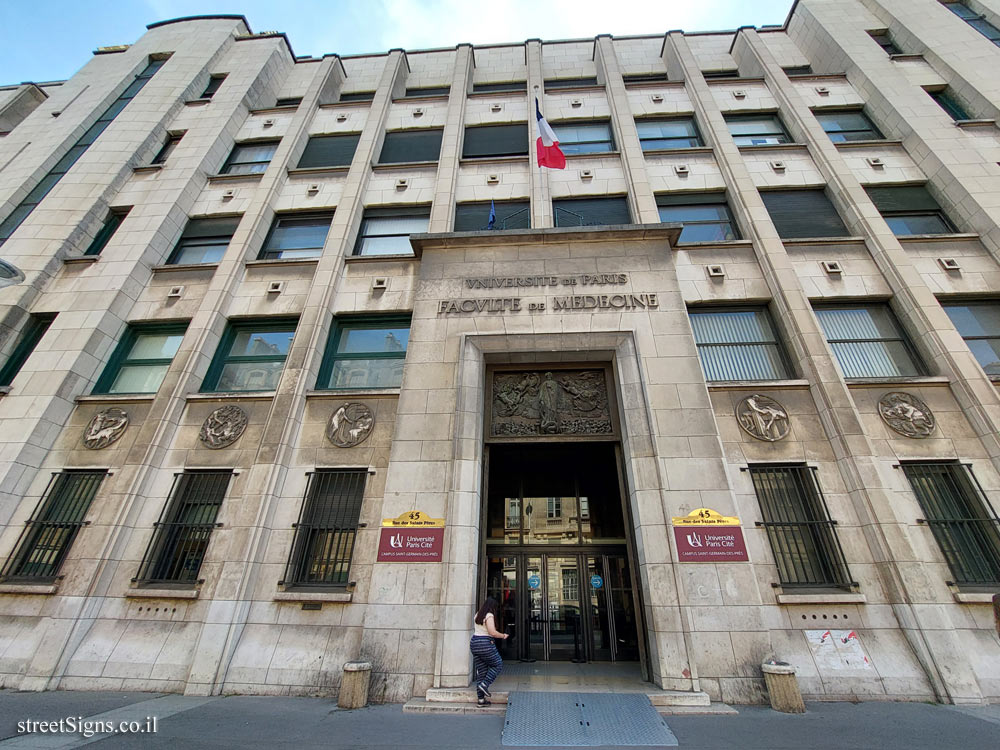 Click for a larger image
Click for a larger image The bronze door is the work of the sculptor Paul Landowski and was photographed that day
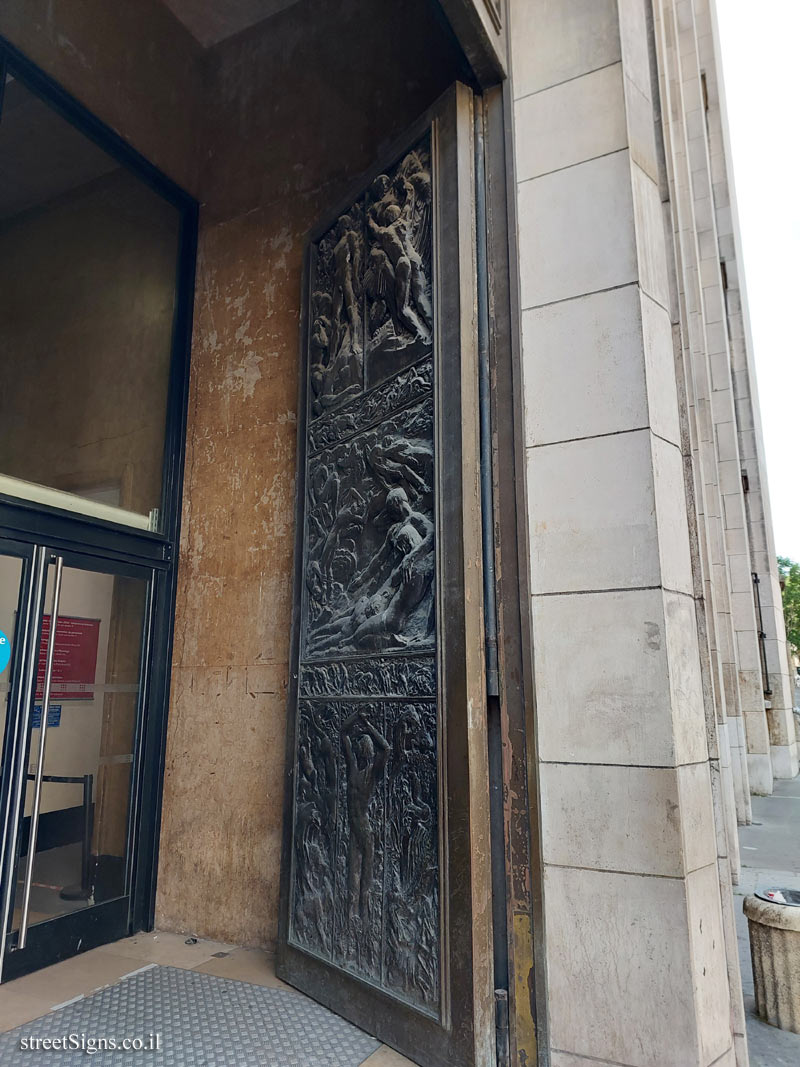 Click for a larger image
Click for a larger image 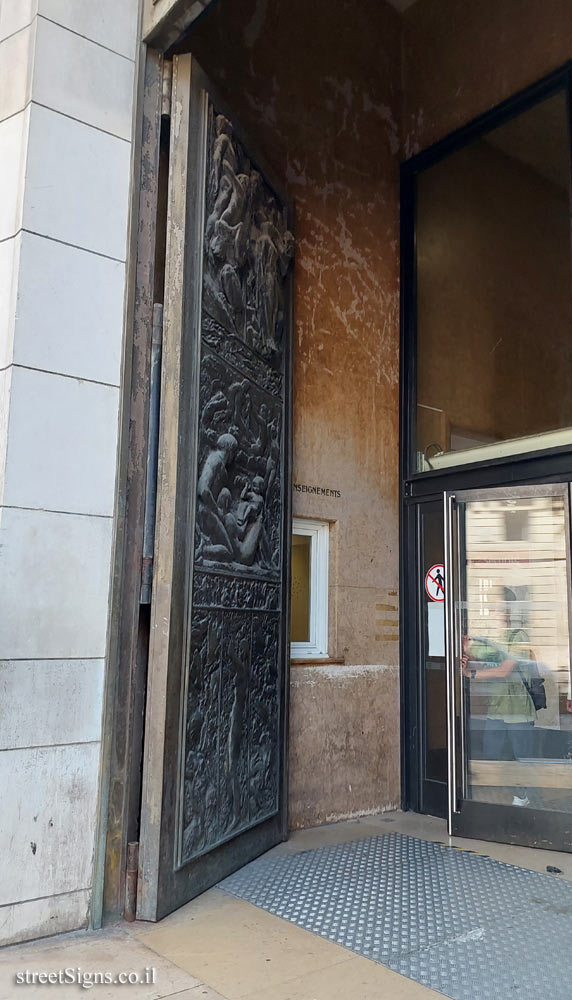 Click for a larger image
Click for a larger image Medallions are placed on the front of the building, the first of which were designed by Paul Landowski, and on them are various subjects from the field of mythology and medicine.
Here are the different medallions:
BRAHMA / TRANSMET / MEDICINE
A medallion made by Robert Reichenstein depicting the Indian god Brahma transmits medicine
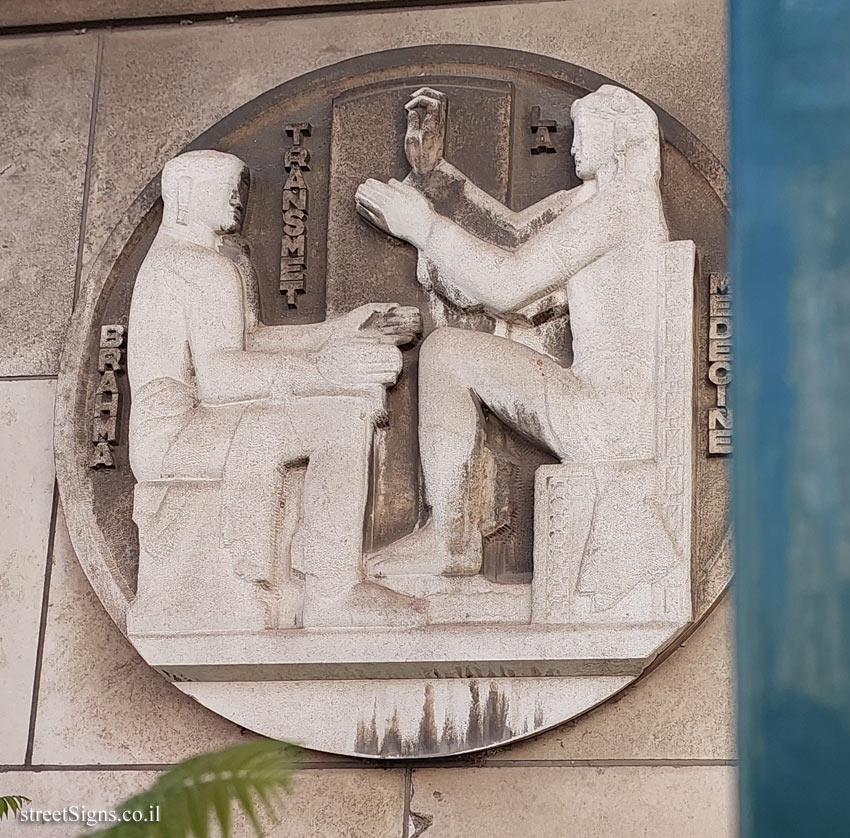 Click for a larger image
Click for a larger image LE PREMIER TRAITÉ DE THÉRAPEUTIQUE
[Translation]
THE FIRST THERAPEUTIC TREATISE
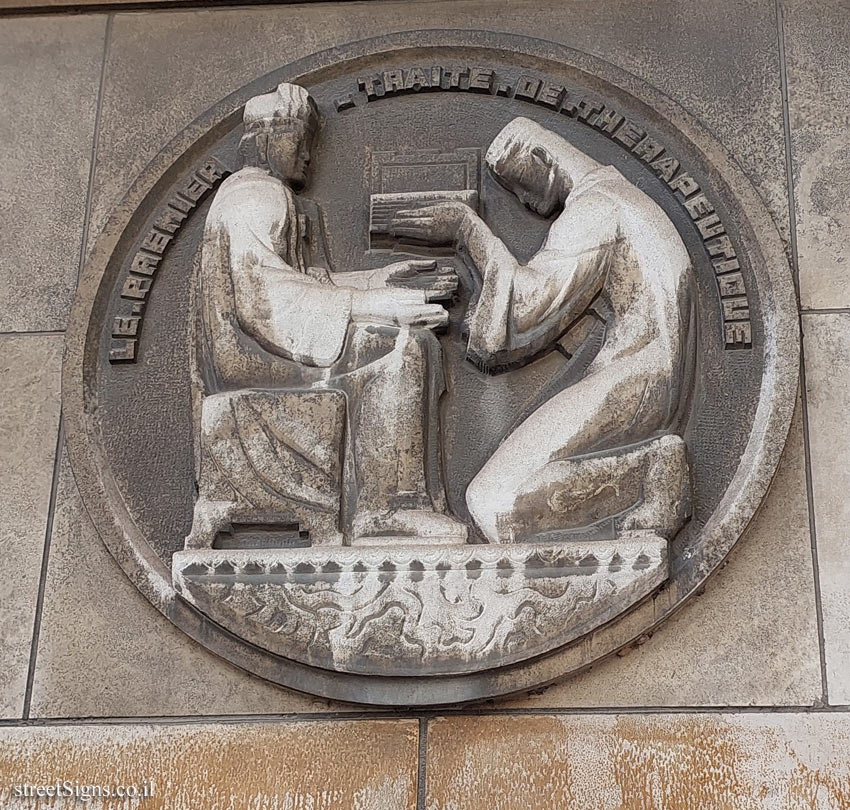 Click for a larger image
Click for a larger image RÉDUCTION D’UNE FRACTURE
[Translation]
Reduction of a Fracture
Medallion also made by Robert Reichenstein
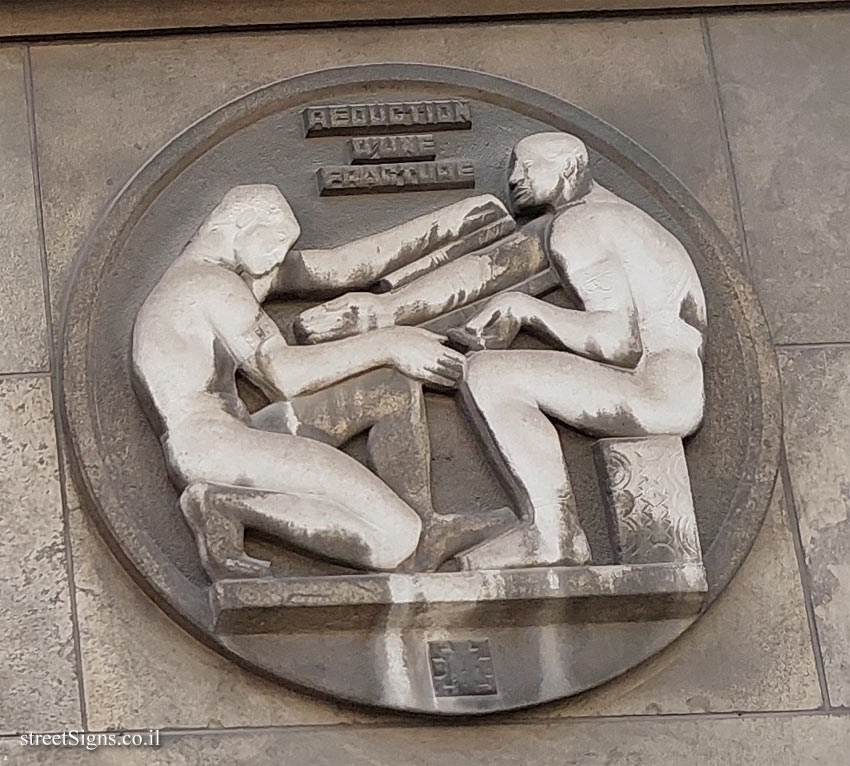 Click for a larger image
Click for a larger image HORUS ET LES TALISMANS
[Translation]
Horus and the Talismans
Horus is the god of war in Egyptian mythology, and his image standing on top of a crocodile was used many times as a medicine amulet.
The medallion was made by Henri-Albert LAGRIFFOUL (whose name appears at the bottom of the medallion)
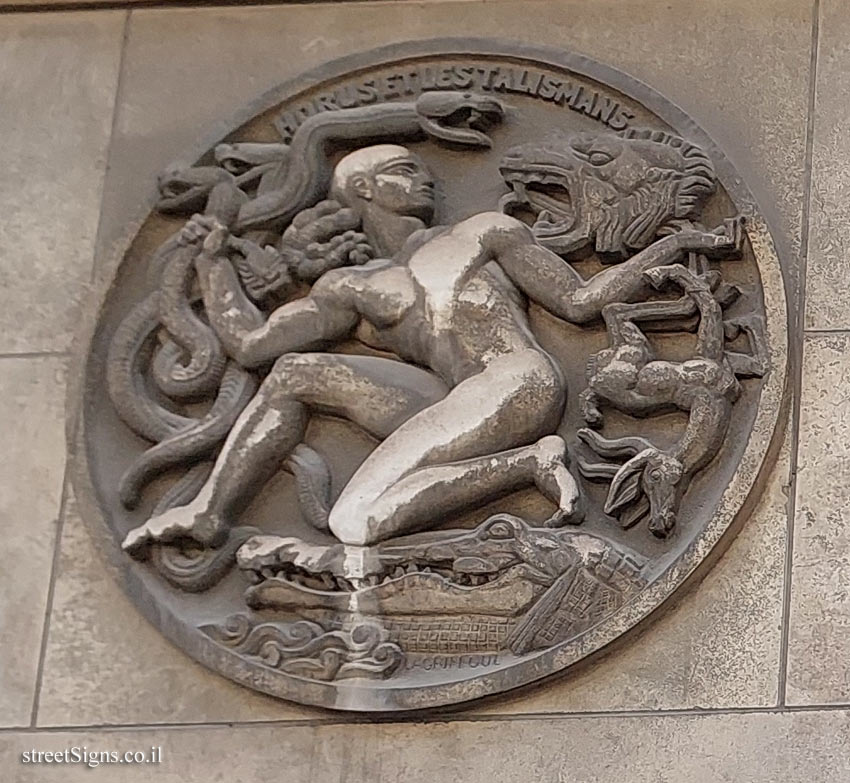 Click for a larger image
Click for a larger image MAAT IMOTEP
[Translation]
Ma’at and Imhotep
Maat is the goddess of justice in Egyptian mythology, Imhotepwas an engineer, architect and the first known physician in human history. He lived in the 27th century BC.
The medallion was made by Henri-Albert LAGRIFFOUL (whose name appears at the bottom of the medallion)
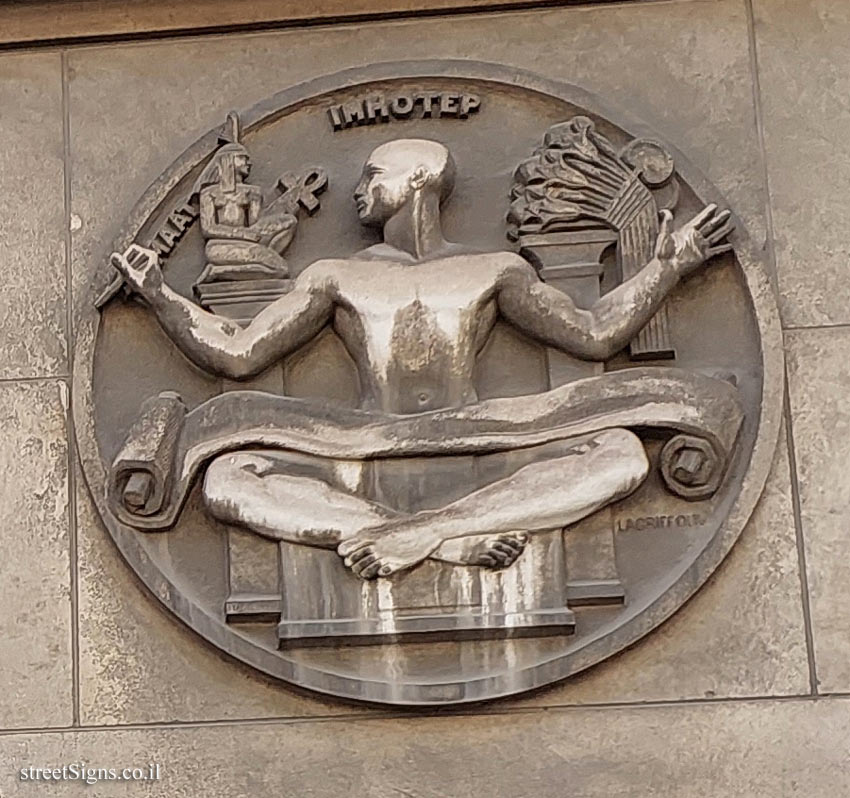 Click for a larger image
Click for a larger image NOUIT THOT
[Translation]
NOUIT and Thoth
By the city of the gods they probably mean Thebes, Thoth is the god of wisdom and science in Egyptian mythology
The medallion was made by Henri-Albert LAGRIFFOUL (whose name appears at the bottom of the medallion)
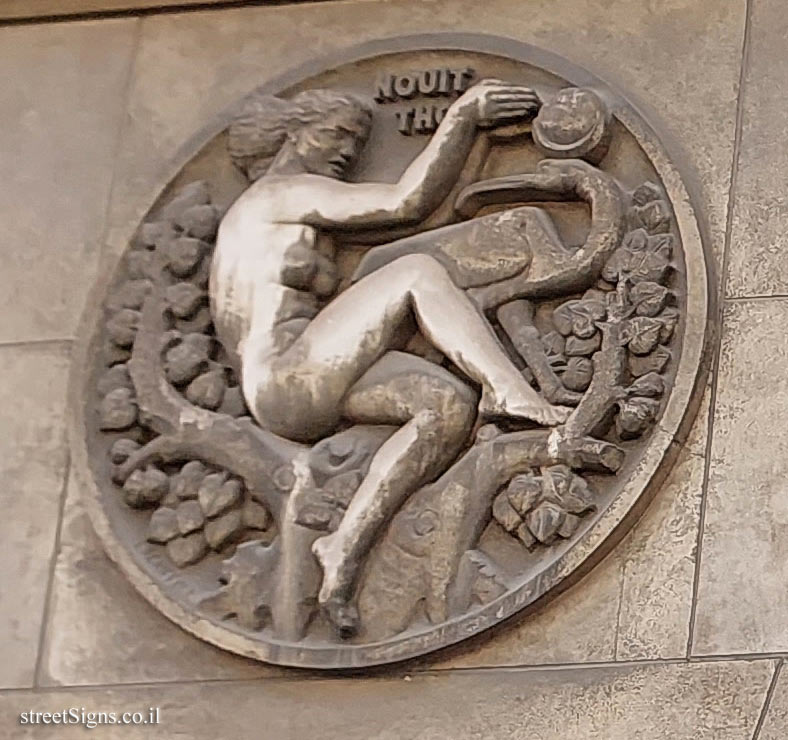 Click for a larger image
Click for a larger image MARDOUK EA
[Translation]
Marduk and Ea (Enki)
Marduk is the main god in Babylonian mythology and the patron of the city of Babylon (he is the god called Baal). Aah was his father and responsible for the fresh water
The medallion was made by Carlos Sarrabezolles
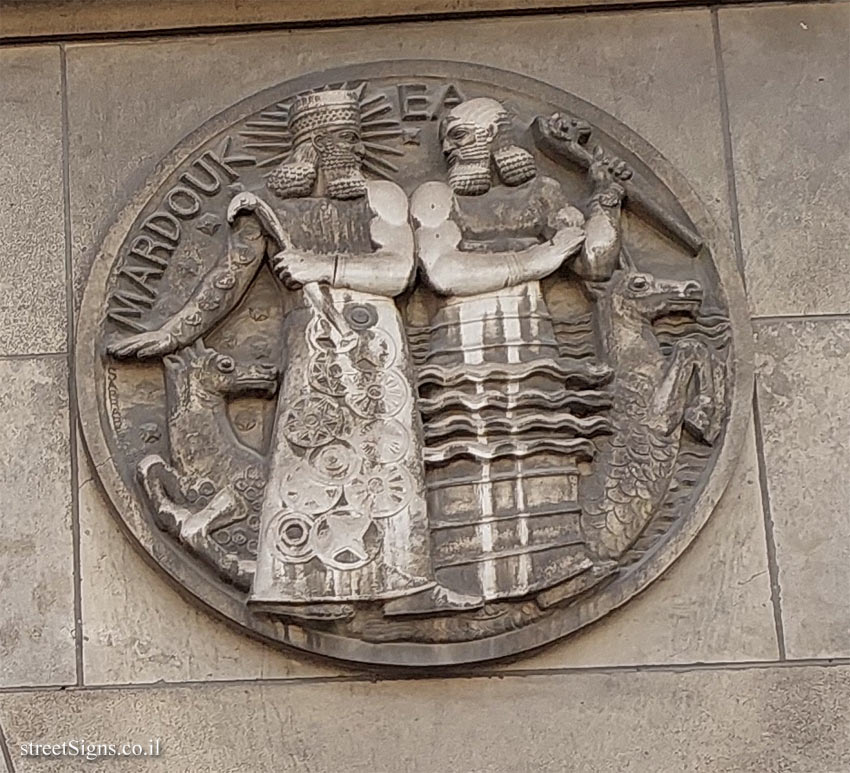 Click for a larger image
Click for a larger image INCANTATION
[Translation]
Incantation
The medallion focuses on saying spells as a way to heal the sick.
The medallion was made by Carlos Sarrabezolles
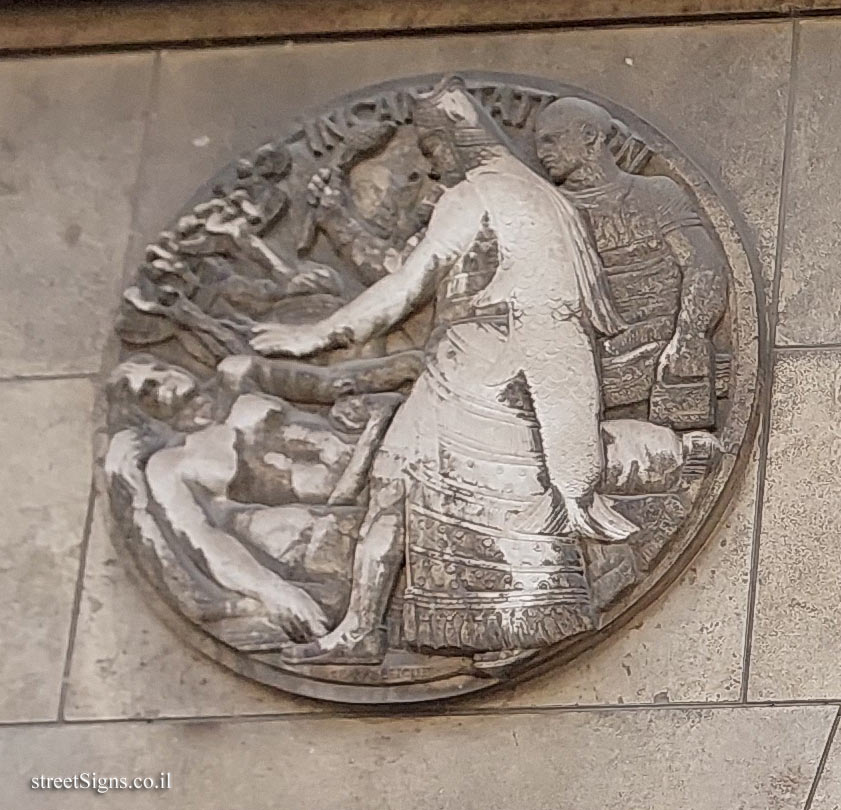 Click for a larger image
Click for a larger image LES SEPT DÉMONS
[Translation]
The seven demons
The seven demons of fear, violence, etc.
The medallion was made by Carlos Sarrabezolles
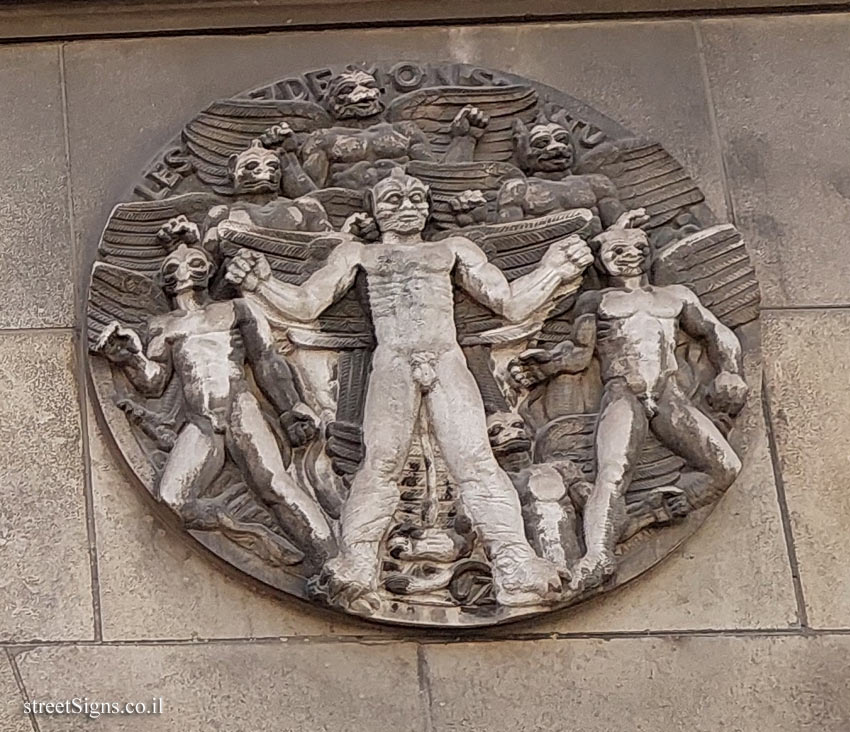 Click for a larger image
Click for a larger image ASTRES PRÉSAGES
[Translation]
Stars-omens
The essence of this medallion is unclear, it may be astrology
The medallion was made by Louis Muller (whose name appears at the bottom of the medallion)
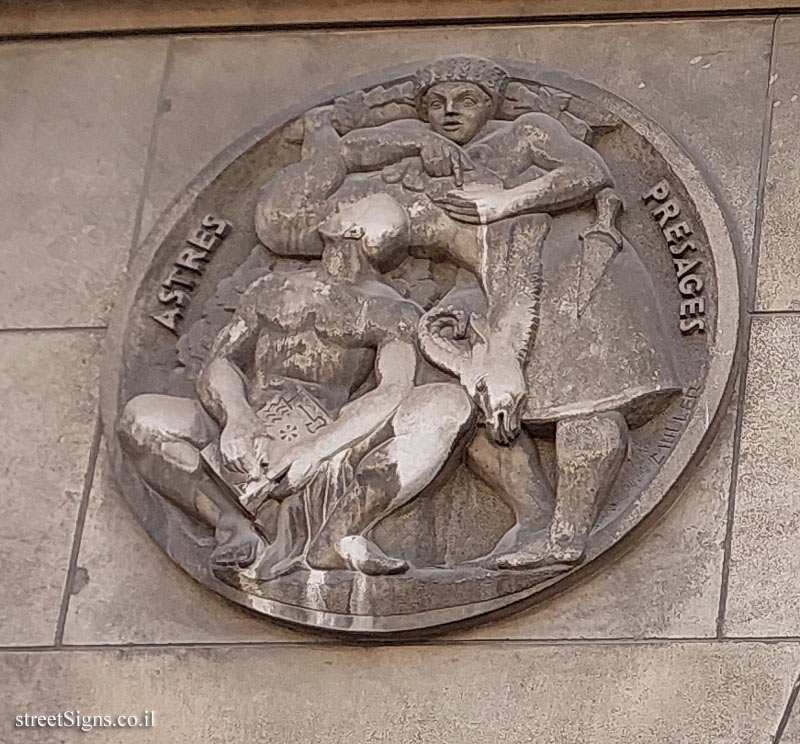 Click for a larger image
Click for a larger image EXORCISME
[Translation]
Exorcism
A ritual of healing the patient by exorcising demons
The medallion was made by Louis Muller (whose name appears on the right side of the medallion)
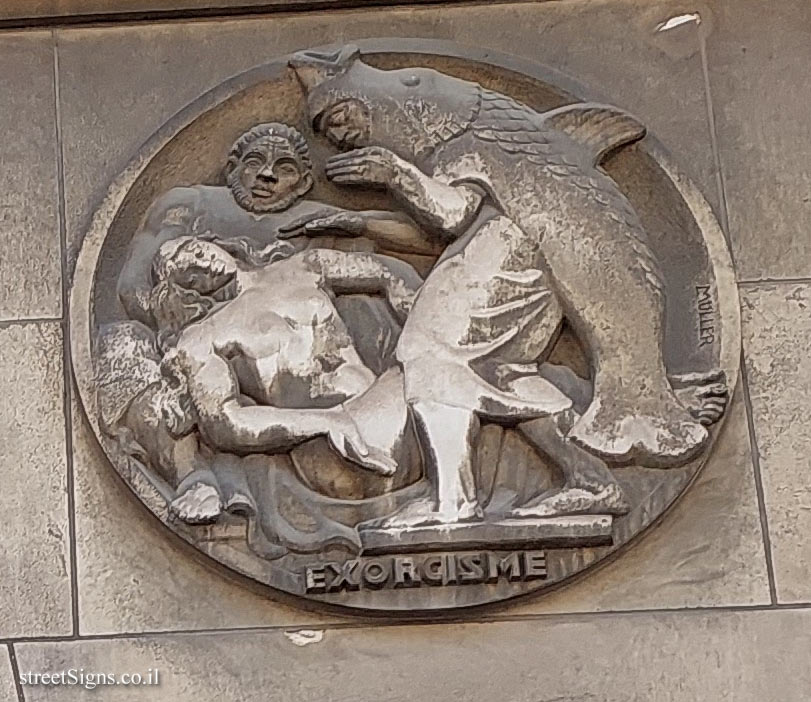 Click for a larger image
Click for a larger image LE SACRIFICE DE L’AGNEAU - LE FEU PURIFICATEUR
[Translation]
THE SACRIFICE OF THE LAMB - THE PURIFYING FIRE
Medicine through sacrifice
The medallion was made by Félix Joffre (whose name appears at the bottom of the medallion)
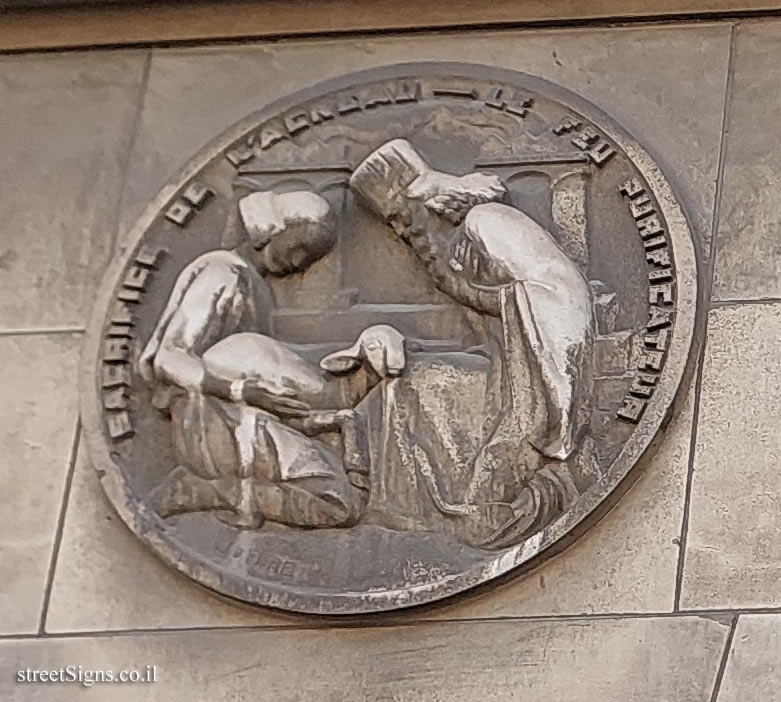 Click for a larger image
Click for a larger image LES SEPT MÈRES
[Translation]
THE SEVEN MOTHERS
It could be that it is the seven mothers who are the origin of all peoples living in Europe, or the seven wives of the gods in the mythology of Hinduism.
The medallion was made by Félix Joffre (whose name appears at the bottom of the medallion)
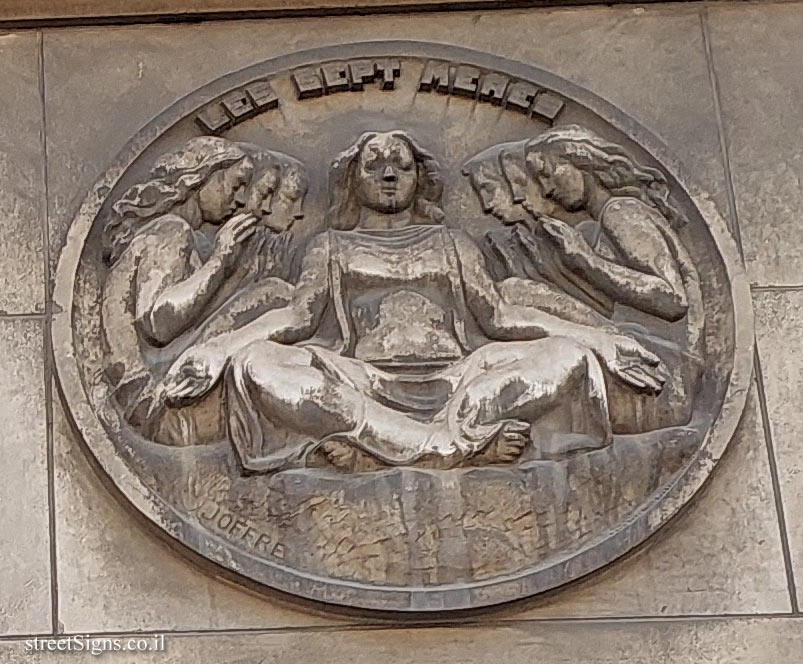 Click for a larger image
Click for a larger image ASSUR ET NINFA
[Translation]
ASHUR AND NINFA
Ashur is the god of the sky in Assyrian mythology, it is not clear who Ninfa is
The medallion was made by Félix Joffre (whose name appears at the bottom of the medallion)
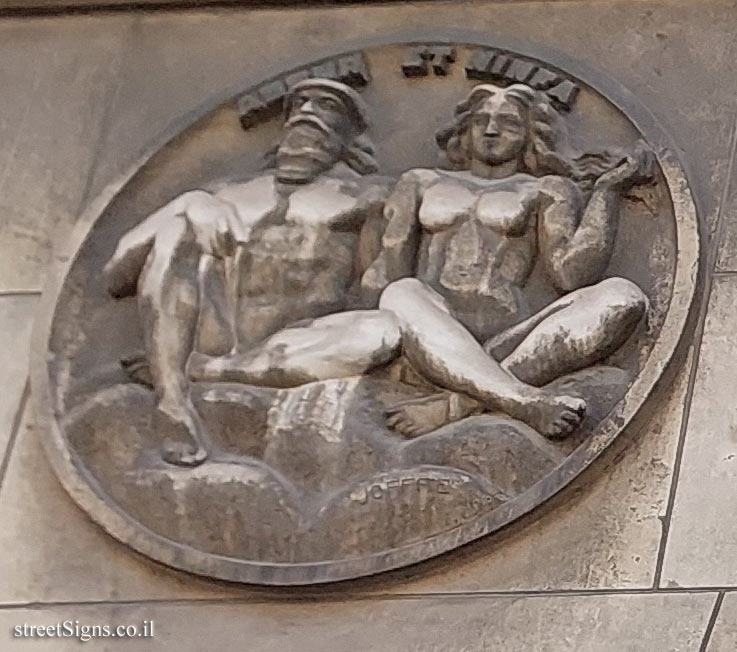 Click for a larger image
Click for a larger image SACRIFICE À ASCLÉPIOS
[Translation]
SACRIFICE TO ASCLEPIUS
Asclepius is the god of medicine in Greek and Roman mythology.
The medallion was made by Lucien Brasseur
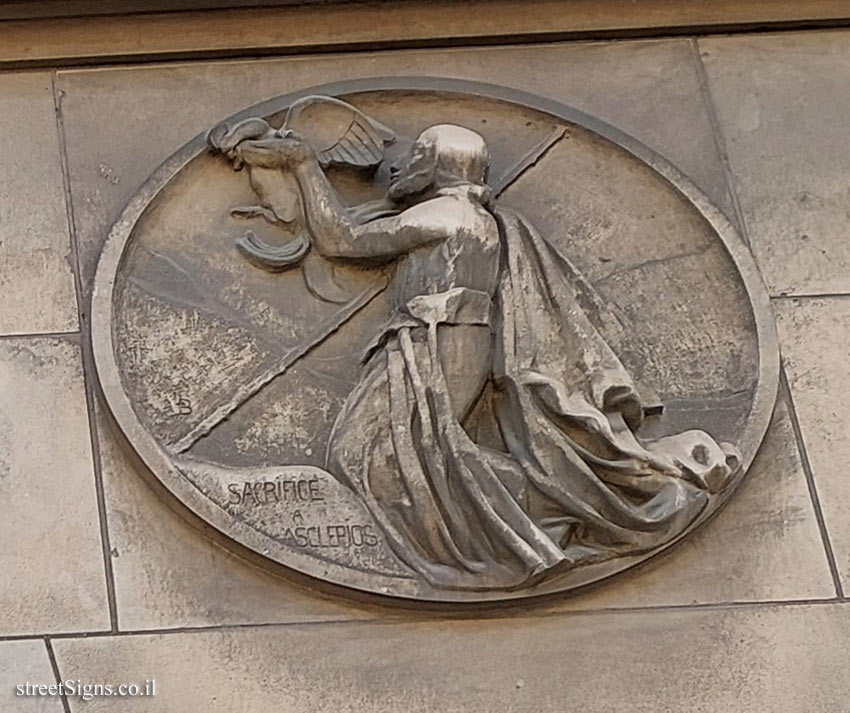 Click for a larger image
Click for a larger image HÉSIODE
[Translation]
Hesiod
Hesiod was a Greek poet who lived in the eighth century BC. His well-known work is Theogony (Birth of the Gods) which describes the lineage of the gods as well as the creation of the world.
The medallion was made by Lucien Brasseur
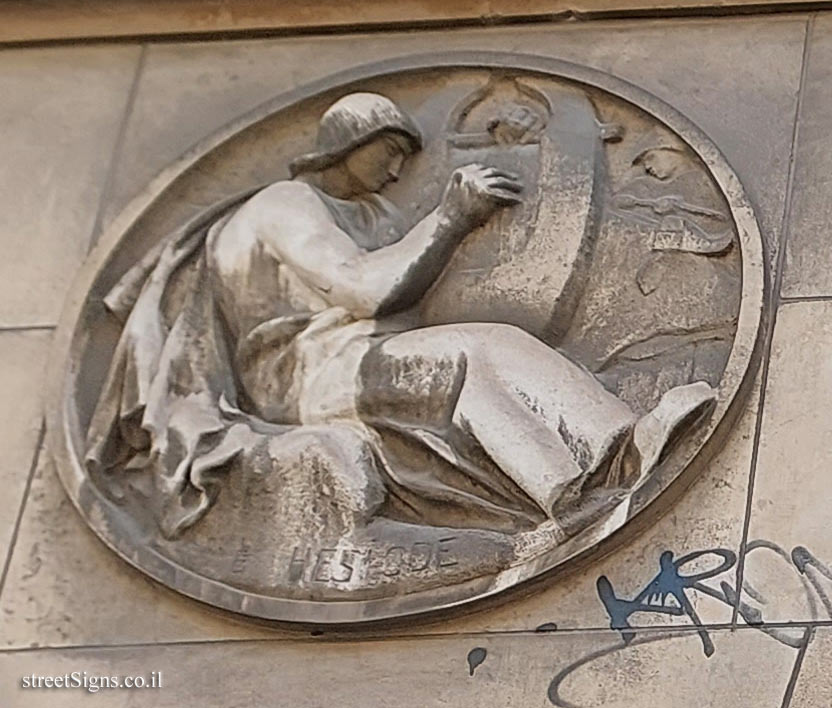 Click for a larger image
Click for a larger image HERACLES ET L’HYDRE
[Translation]
Heracles and Hydra
In Greek and Roman mythology, Hercules was a hero, the son of Zeus. After killing his wife and children, he was punished to perform heroic deeds, one of which was killing the Lernaean Hydra - a water snake with 9 heads.
The medallion was made by Lucien Brasseur
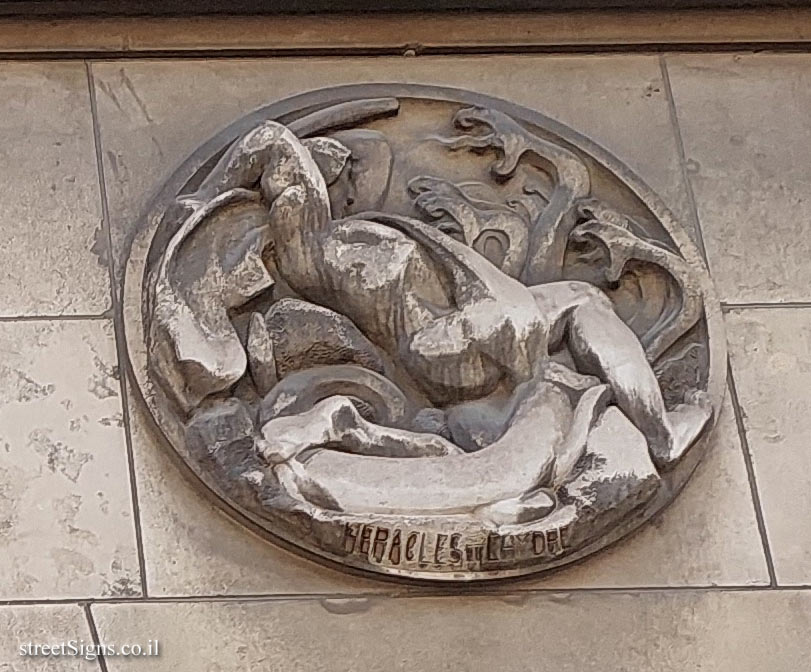 Click for a larger image
Click for a larger image PAN
[Translation]
Pan
The god of shepherds in Greek mythology. The lower half is a goat and the upper half is a human shape. He is also considered the god of fertility, and is associated with music due to his wonderful playing on the flute, which is now called the "Pan flute"
The medallion was made by Lucien Brasseur
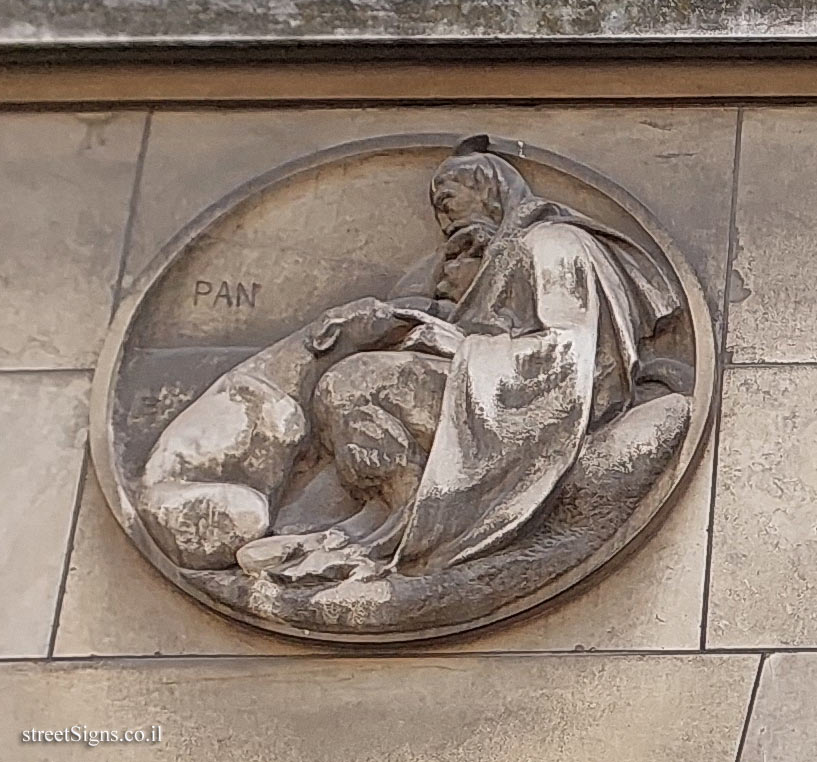 Click for a larger image
Click for a larger image AGNODICE, FEMME MÉDECIN DEVANT L’ARÉOPAGE
[Translation]
Agnodice, Female Doctor In Front of the Areopagus
Agnodice who lived in the fourth century BC was the first woman doctor, gynecologist and midwife in Athens. To work she pretended to be a man. Male doctors who were jealous of her success accused her of seducing women, and for that she stood trial on Areopagus Hill near Athens, at the trial she lifted her shirt and revealed her identity. At the end of the trial she was acquitted, and since then women have been allowed to practice medicine in Athens.
The medallion was made by François-Paul Niclausse
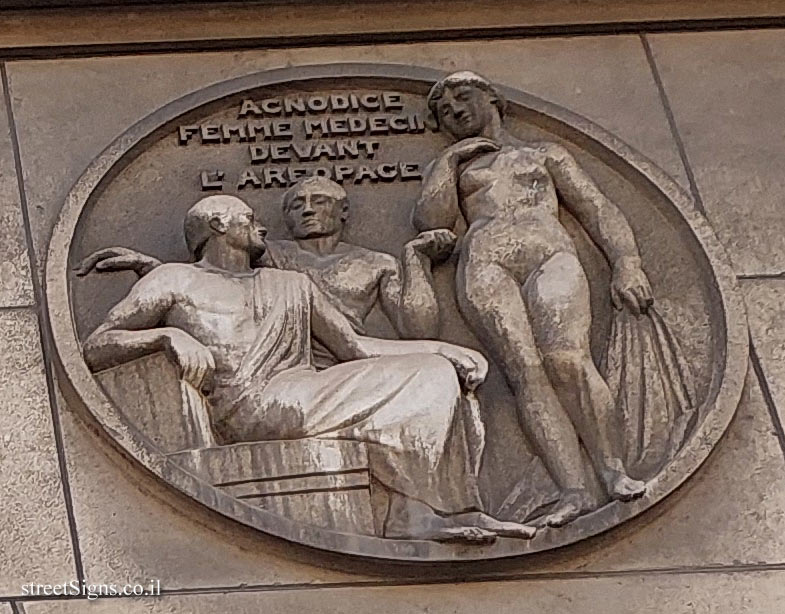 Click for a larger image
Click for a larger image LION ET SERPENT
[Translation]
Lion with snake
The medallion may refer to a sculpture made by Antoine-Louis Barye depicting a lion and a snake fighting
The medallion was made by François-Paul Niclausse
 Click for a larger image
Click for a larger image HÉROPHILE PREMIÈRE DISSECTION
[Translation]
Herophilos: first dissection
Herophilos was a Greek physician who lived in the third century BC (335-228 BC) and was probably the first anatomy expert.
The medallion was made by François-Paul Niclausse
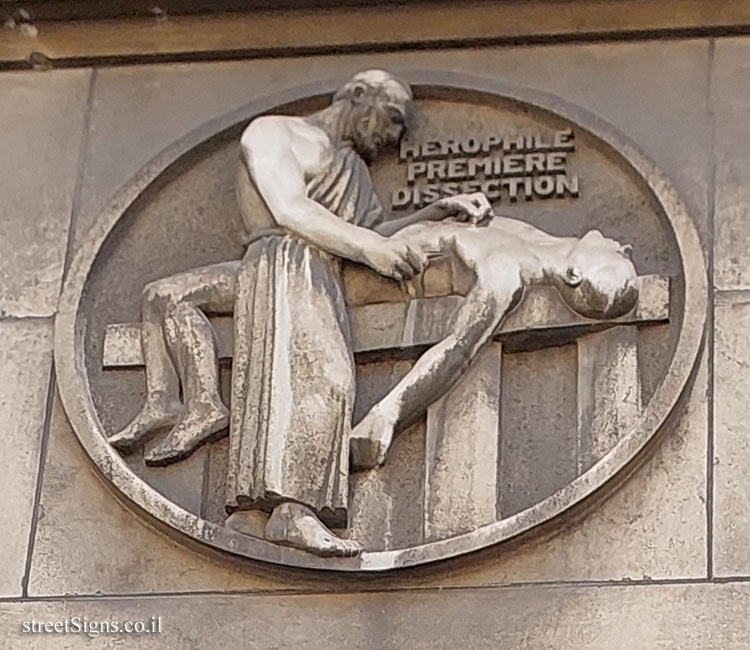 Click for a larger image
Click for a larger image ÉCOLE D’ALEXANDRIE
[Translation]
School of Alexandria
The place that was in the Hellenistic period (300 BC) a center for studying literature, philosophy and medicine
The medallion was made by François-Paul Niclausse
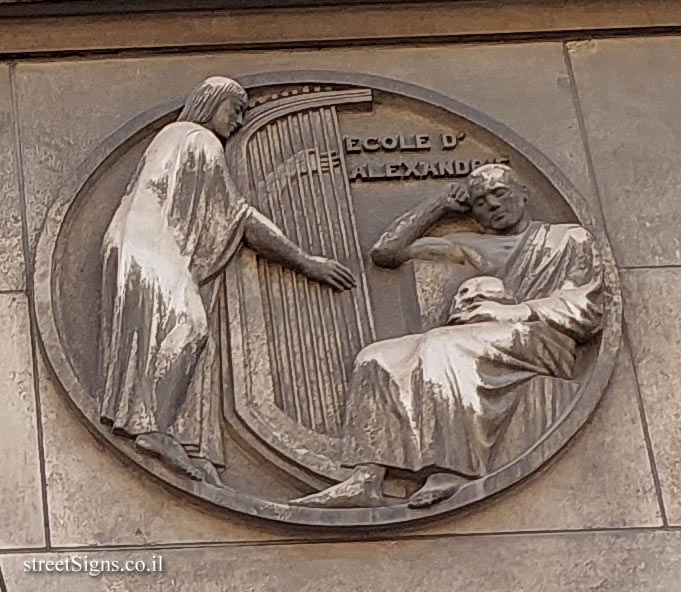 Click for a larger image
Click for a larger image LES SINGES
[Translation]
Monkeys
The meaning of the medallion in relation to mythology or medicine is not clear
The medallion was made by François-Paul Niclausse
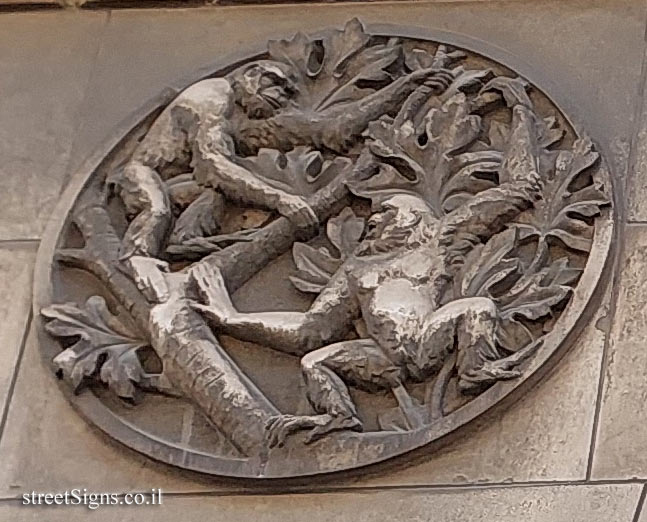 Click for a larger image
Click for a larger image PTOLÉMÉE PHILADELPHE FONDE LE JARDIN ZOOLOGIQUE
[Translation]
Ptolemy Philadelphus Founds The Zoological Garden
Ptolemy Philadelphus who was the son of Cleopatra Queen of Egypt ruled over Syria for 4 years starting in 34 BC.
He is credited with establishing the first zoo.
The medallion was made by François-Paul Niclausse
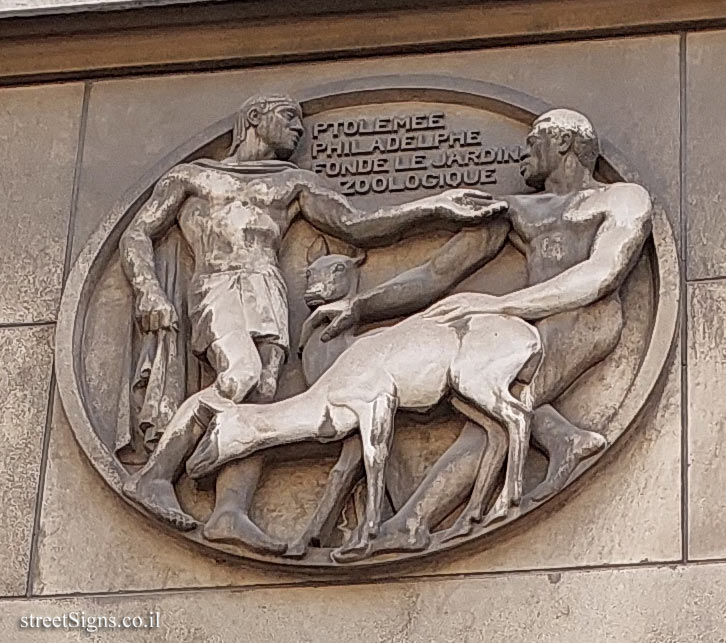 Click for a larger image
Click for a larger image ASCLÉPIADE ET LUCRECE
[Translation]
Asclepiades of Bithynia and Lucretius
Asclepiades of Bithynia was a Greek physician who lived between 40-124 BC. He is known as the one who founded the Greek school of medicine in Rome and as the first to perform Tracheotomy surgery.
Lucretius (55 to 98 BC) Roman poet
The medallion was made by Louis Lejeune
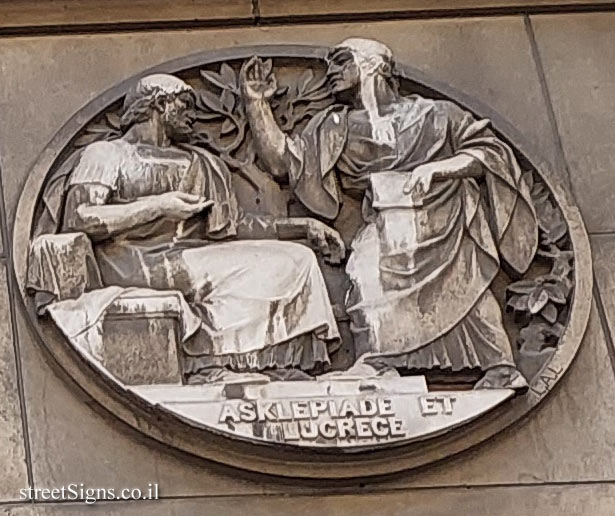 Click for a larger image
Click for a larger image NYMPHES DES SOURCES MIRACULEUSES
[Translation]
Nymphs of Miraculous Springs
The nymphs were half goddesses and half mortals and were associated with nature
The medallion was made by Louis Lejeune
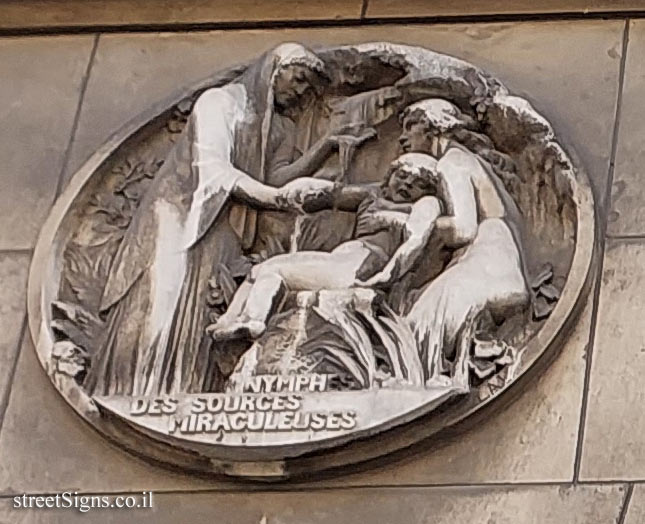 Click for a larger image
Click for a larger image LES ARUSPICES
[Translation]
The Aruspices
Soothsayer who interpreted the will of the gods expressed by miracles or by the appearance of the entrails of the victims of sacrifices.
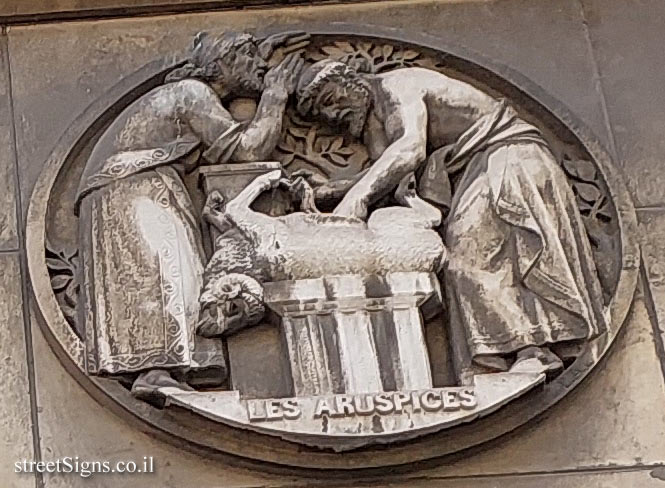 Click for a larger image
Click for a larger image MARC-AURELE SOIGNÉ PAR GALIEN
[Translation]
Marcus Aurelius cared for by Galen
Claudius Galenus (Galen) was a Greek physician who lived in the second century AD. He was the court physician of the Roman emperor Marcus Aurelius and is considered the pioneer of the use of scientific methods in medicine.
The medallion was made by Louis Lejeune
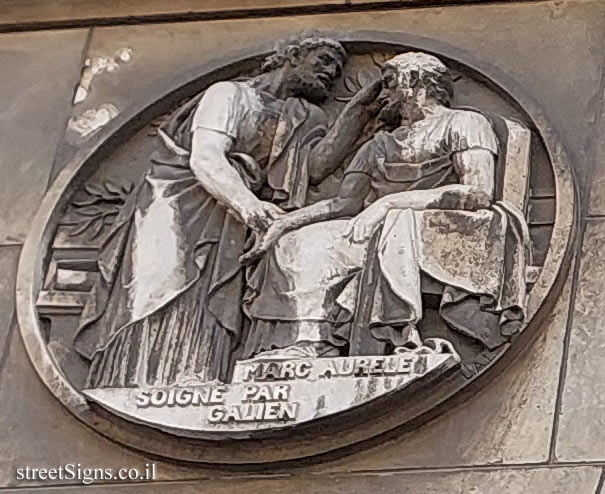 Click for a larger image
Click for a larger image AVICENNE
[Translation]
Avicenna
Ibn Sina (980-1037) was a Persian physician and philosopher. The first to use essential oils for healing
The medallion was made by Marcel Gaumont whose initials are engraved on the bottom of the medallion
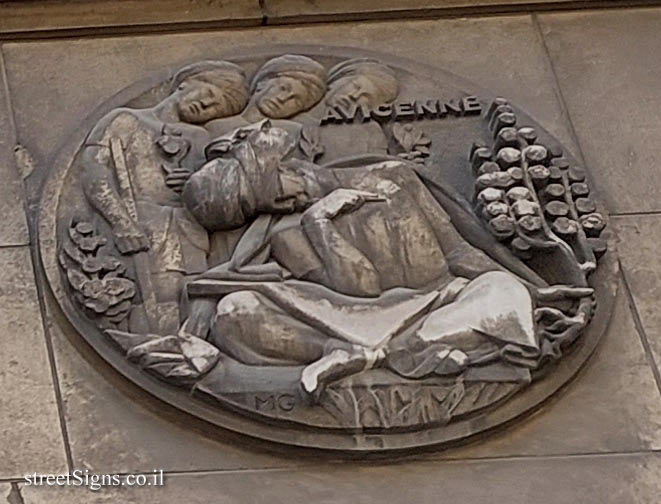 Click for a larger image
Click for a larger image RAZES
[Translation]
Abu Bakr al-Razi
Abu Bakr al-Razi (865-925) was a Persian physician and philosopher, probably the first to recognize the disease of smallpox
The medallion was made by Marcel Gaumont whose initials are engraved on the bottom of the medallion
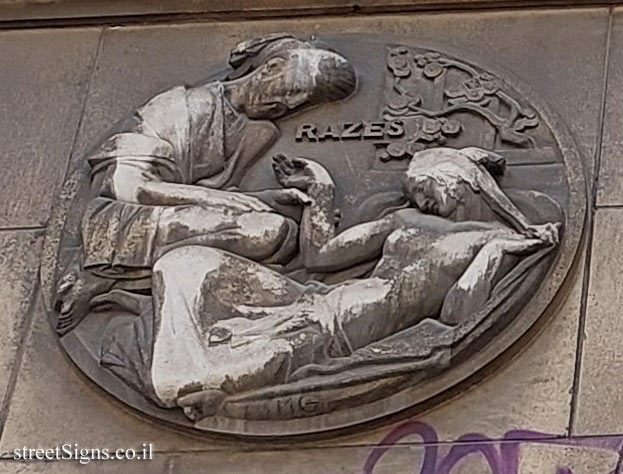 Click for a larger image
Click for a larger image MAIMONIDE
[Translation]
Maimonides
Rabbi Moses ben Maimon (Maimonides) (1138-1204), one of the greatest religious arbiters of the Jews, a philosopher, a doctor, the author of "Mishneh Torah", and a "The Guide for the Perplexed"..
The medallion probably describes his practice of medicine in Egypt in the last years of his life.
The medallion was made by Marcel Gaumont whose initials are engraved on the bottom of the medallion
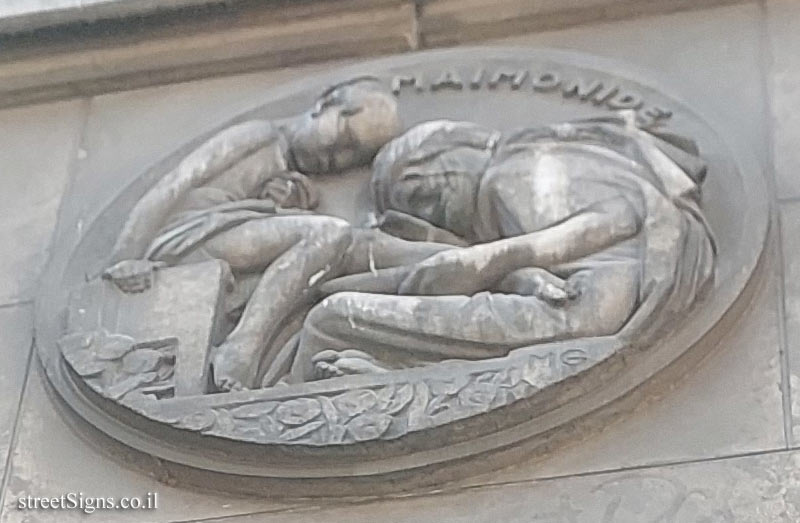 Click for a larger image
Click for a larger image AVERROES
ΑΡΙΣΤΟΤΈΛΗΣ
[Translation]
Averroes
Aristotle
Ibn Rushd (1126-1198) Muslim physician and philosopher born in Spain. Considered one of the fathers of rationalism in philosophy. In medicine he proposed a new theory for stroke, and was the first to discover the symptoms of Parkinson’s disease.
The name of Aristotle whom he attacked in his essays appears in Greek
The medallion was made by Marcel Gaumont whose initials are engraved on the side of the medallion
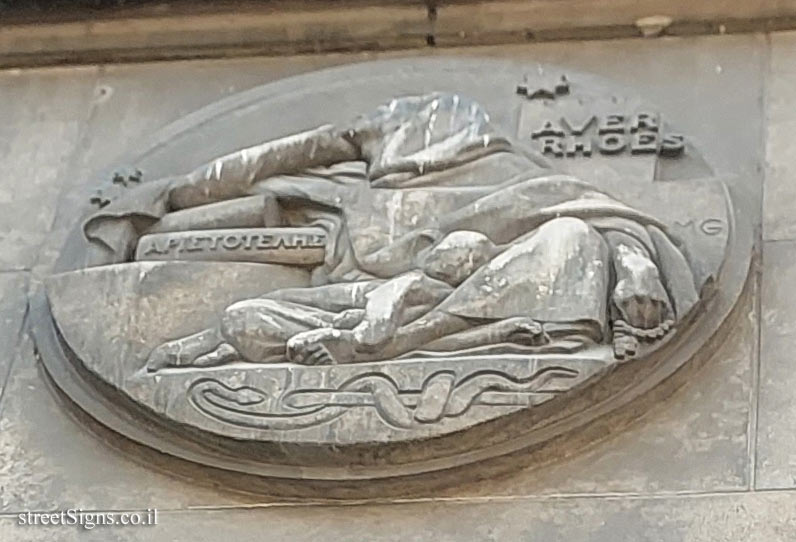 Click for a larger image
Click for a larger image PARACELSE
[Translation]
Paracelsus
Paracelsus was a Swiss alchemist, astrologer and physician (1493-1541), who is considered one of the fathers of modern medicine, mainly because he rejected the old methods that were not proven by experiment.
The medallion describes the public burning of the writings of Claudius Galenus (Galen) and Ibn Sina (Avicenna) by Paracelsus on June 23, 1527, thereby indicating that he does not believe in their methods.
The medallion was made by Alphonse Terroir whose name is engraved on the bottom of the medallion
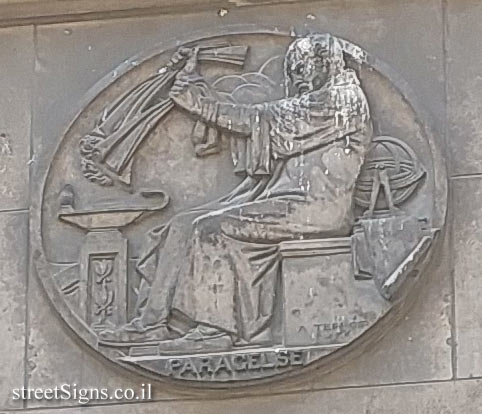 Click for a larger image
Click for a larger image AMBROISE PARÉ
1517-1590
[Translation]
Ambroise Paré
Ambroise Paré (1510-1590) a French surgeon who is considered the father of modern surgery and one of the greatest surgeons
The medallion was made by Alphonse Terroir
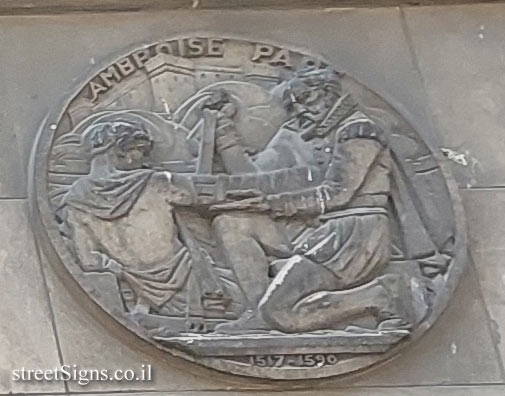 Click for a larger image
Click for a larger image LA RENAISSANCE
[Translation]
The Renaissance
The Renaissance period (rebirth) between the 14th and 17th centuries was the period after the Middle Ages in which art and science flourished
The medallion was made by Alphonse Terroir whose name is engraved on it
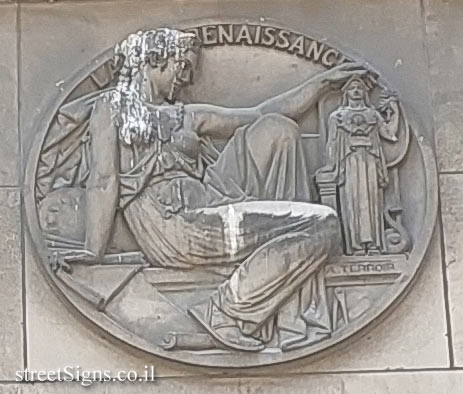 Click for a larger image
Click for a larger image LÉONARD DE VINCI 1452-1519
[Translation]
Leonardo da Vinci
Leonardo da Vinci (1452-1519), perhaps the most famous painter, inventor, scientist - Renaissance man. The man who perhaps symbolizes the Renaissance period more than anyone else. Da Vinci created the Mona Lisa, studied the human body and invented a considerable amount of inventions.
The medallion was made by Alphonse Terroir whose name is engraved on it
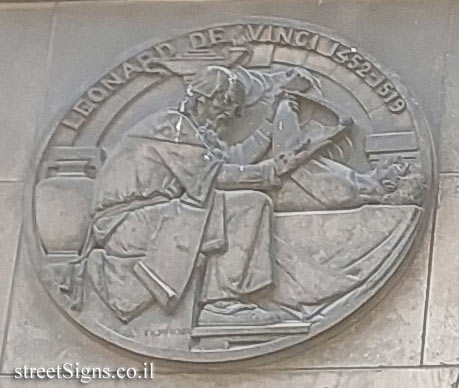 Click for a larger image
Click for a larger image RABELAIS 1531
[Translation]
Rabelais
François Rabelais (1494-1553) French writer, jurist and doctor. Best known for the Gargantua and Pantagruel series of books. He studied medicine in 1531 at the University of Montpellier (this is the year that appears on the medallion), and 6 years later he taught medicine at the same university.
The medallion was made by Alphonse Terroir
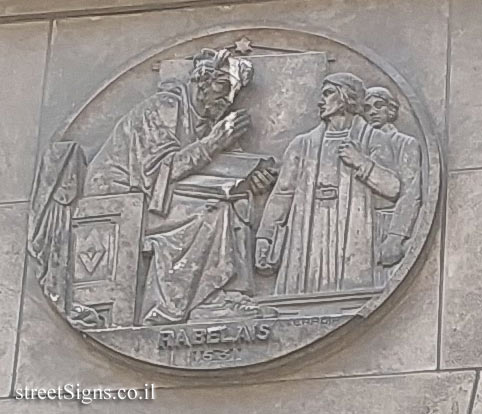 Click for a larger image
Click for a larger image
Learn about:

 Click for a larger image
Click for a larger image  Click for a larger image
Click for a larger image  Click for a larger image
Click for a larger image  Click for a larger image
Click for a larger image  Click for a larger image
Click for a larger image  Click for a larger image
Click for a larger image  Click for a larger image
Click for a larger image  Click for a larger image
Click for a larger image  Click for a larger image
Click for a larger image  Click for a larger image
Click for a larger image  Click for a larger image
Click for a larger image  Click for a larger image
Click for a larger image  Click for a larger image
Click for a larger image  Click for a larger image
Click for a larger image  Click for a larger image
Click for a larger image  Click for a larger image
Click for a larger image  Click for a larger image
Click for a larger image  Click for a larger image
Click for a larger image  Click for a larger image
Click for a larger image  Click for a larger image
Click for a larger image  Click for a larger image
Click for a larger image  Click for a larger image
Click for a larger image  Click for a larger image
Click for a larger image  Click for a larger image
Click for a larger image  Click for a larger image
Click for a larger image  Click for a larger image
Click for a larger image  Click for a larger image
Click for a larger image  Click for a larger image
Click for a larger image  Click for a larger image
Click for a larger image  Click for a larger image
Click for a larger image  Click for a larger image
Click for a larger image  Click for a larger image
Click for a larger image  Click for a larger image
Click for a larger image  Click for a larger image
Click for a larger image  Click for a larger image
Click for a larger image  Click for a larger image
Click for a larger image  Click for a larger image
Click for a larger image  Click for a larger image
Click for a larger image  Click for a larger image
Click for a larger image  Click for a larger image
Click for a larger image